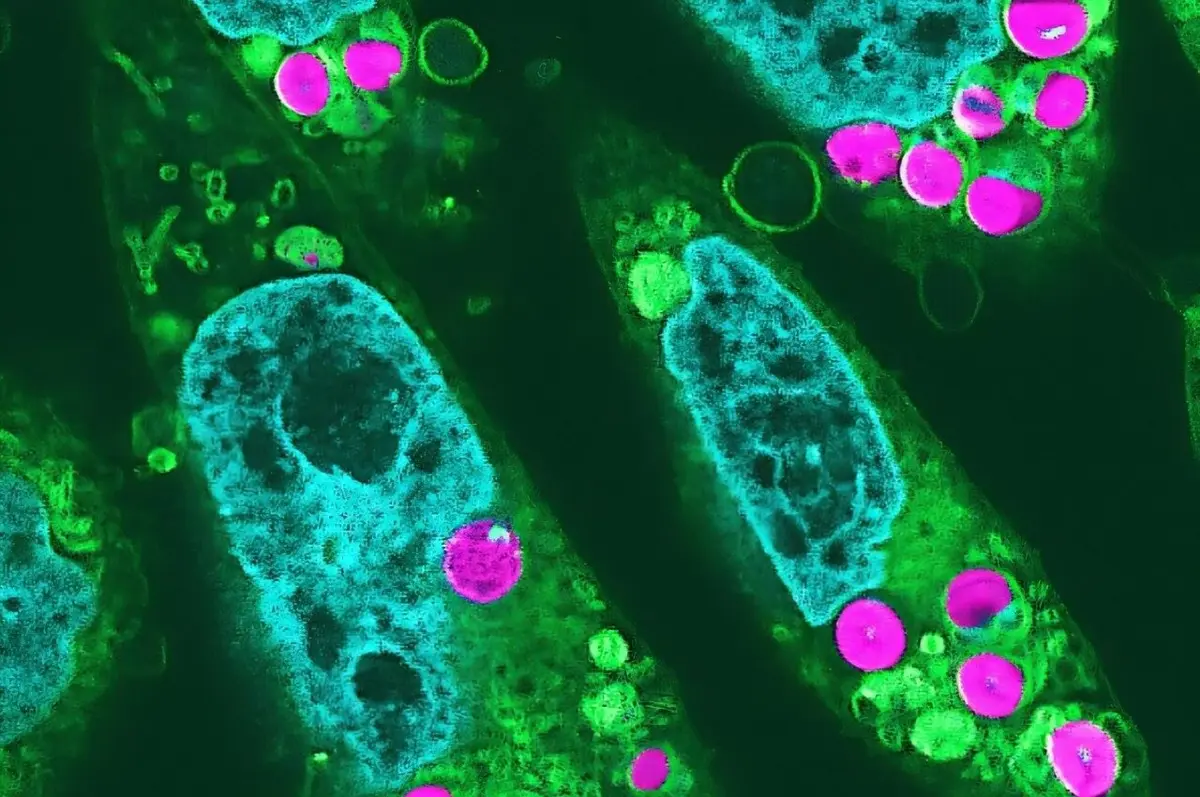Scientists have successfully created animal cells capable of photosynthesis, an incredible feat that redefines biological boundaries. This breakthrough, led by Professor Sachihiro Matsunaga of the University of Tokyo, could revolutionize medical research and help advance the production of laboratory-grown meat. Photosynthesis in animal cells
Traditionally reserved for plants, algae, and some bacteria, photosynthesis is a process that uses sunlight, water, and carbon dioxide to produce oxygen and sugars, essentially “feeding” the organism.
“All living organisms on Earth, including humans, are able to survive through photosynthesis,” Matsunaga said. “Animal cells consume oxygen, eat and break down sugar, releasing carbon dioxide. This reaction is the opposite of photosynthesis.”
By imparting photosynthetic properties to animal cells, the team hopes to create cells that consume less oxygen and emit less carbon dioxide, effectively turning them into mini oxygen producers.
Overcoming 50 years of challenges
Attempts to create photosynthetic animal cells date back to the 1970s. “If we can make at least some of the photosynthesis happen in animal cells, we can reduce the amount of oxygen consumed, reduce the amount of sugar consumed, and reduce carbon dioxide emissions,” Matsunaga said.
But the challenge is to persuade animal cells to accept chloroplasts, the cell structures where photosynthesis occurs in plants. Previously, animal cells destroyed chloroplasts by recognizing them as foreign invaders such as bacteria or viruses.
Animal cells absorb chloroplasts
Matsunaga’s team took two important steps to achieve this scientific breakthrough. First, they looked for chloroplasts that could survive the warmer environment of animal cells, which are typically cultured at around 37 degrees Celsius, well above the temperature that most plant chloroplasts can withstand. Once they found suitable chloroplasts, the team needed to prevent animal cells from rejecting them as foreign material.
“Chloroplasts eaten as food can be stored in an animal cell for at least two days, during which time the first photosynthetic reaction can be detected,” Matsunaga said. he said.
By allowing the animal cells to engulf the chloroplasts as “food” rather than forcibly implanting them, the team was able to bypass the immune response that normally destroys the chloroplasts.
A new source of energy and growth
The first results surprised Matsunaga and his colleagues. Animal cells not only bore chloroplasts but also showed an increased growth rate; This suggests that chloroplasts have become an additional energy source.
“I was surprised because we were able to do something that no one had been able to do for 50 years and that all biological researchers had given up on,” Matsunaga said. This success may be of great importance, especially for use in medicine and artificial meat production.
Application of animal photosynthesis
While human photosynthesis remains a distant goal, Matsunaga believes immediate applications lie in medical research and laboratory-grown meat production. One of the biggest hurdles to growing tissue for medical use or artificial meat is ensuring oxygen delivery to densely packed cells.
As Matsunaga explains, “the interior of the cell mass when cells become multilayered [не отримує достатньо кисню]; Cell division stops and no increase in size is possible.” By inserting chloroplasts, these cell clusters can produce their own oxygen when exposed to light, potentially restoring cell division and growth.
Looking to the future, Matsunaga envisions medical applications that would distribute oxygen to certain organs, such as the heart. For example, placing a small LED near the heart could improve oxygen delivery to patients with heart disease by providing light to photosynthetic cells.
However, extending the lifespan of chloroplasts in animal cells remains a challenge. “In the future, we will improve our technique so that chloroplasts can photosynthesize in animal cells for as long as possible,” Matsunaga said.
Matsunaga’s research marks a paradigm shift in how engineering animal cells to photosynthesize could lead to innovations ranging from lab-grown meat production to advanced medical procedures.
Although work remains to be done to expand the function of chloroplasts in these cells, Matsunaga’s team has opened up a new realm of possibilities by challenging long-held beliefs in biology and pushing the limits of what cells can achieve.
This breakthrough highlights the transformative potential of photosynthesis beyond plant life and offers a unique and versatile tool for solving human problems in food production, medicine, and perhaps even climate change. The study was published in the journal Proceedings of the Japanese Academy.
Source: Port Altele
